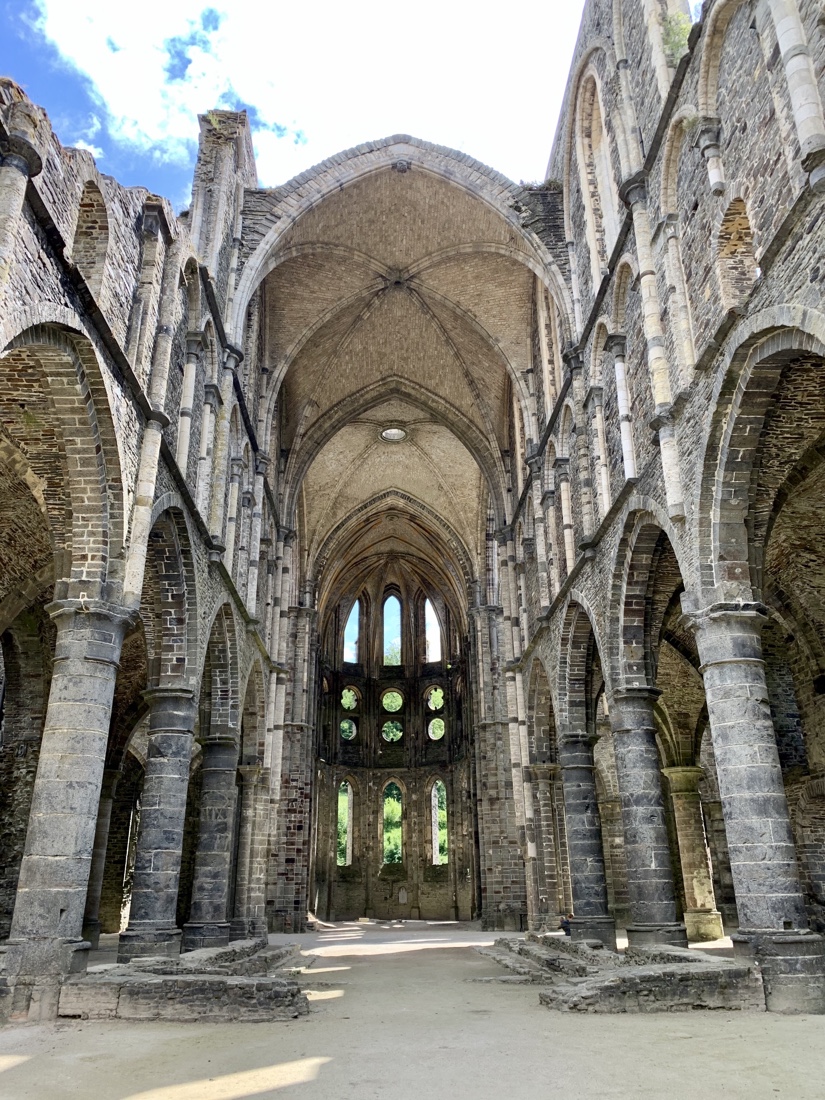
Viller’s Abbey is just the coolest. So far it is my favorite place I’ve visited in Belgium. It’s a cathedral and entire monastery founded by monks from Champagne, France in 1146 and was in use until 1796. This part of Belgium is very close to the French border and changed hands and rulers over the centuries, and eventually the French Revolution contributed to its abandonment in some way I’m not quite clear on. C’est la vie. In 1796, Belgium wasn’t independent yet and the abbey was in the Southern Netherlands, which used to be ruled by Spain, but also this area had been conquered by France at some point.
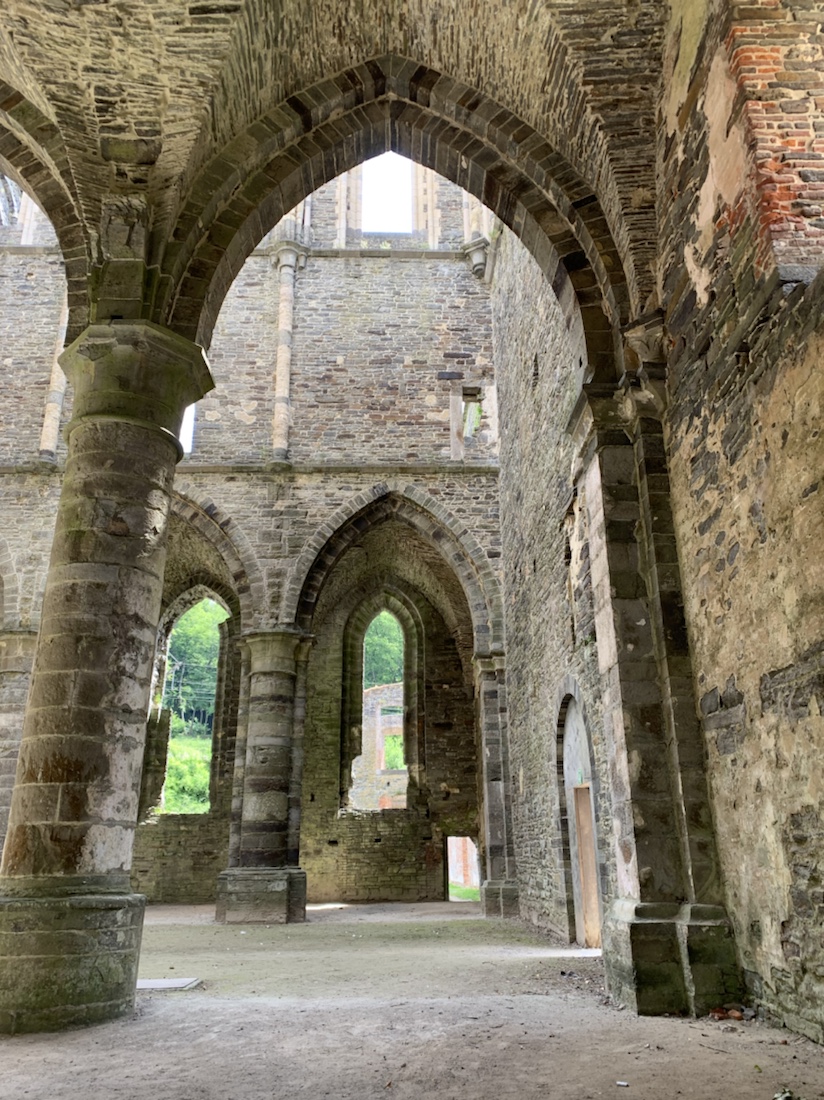
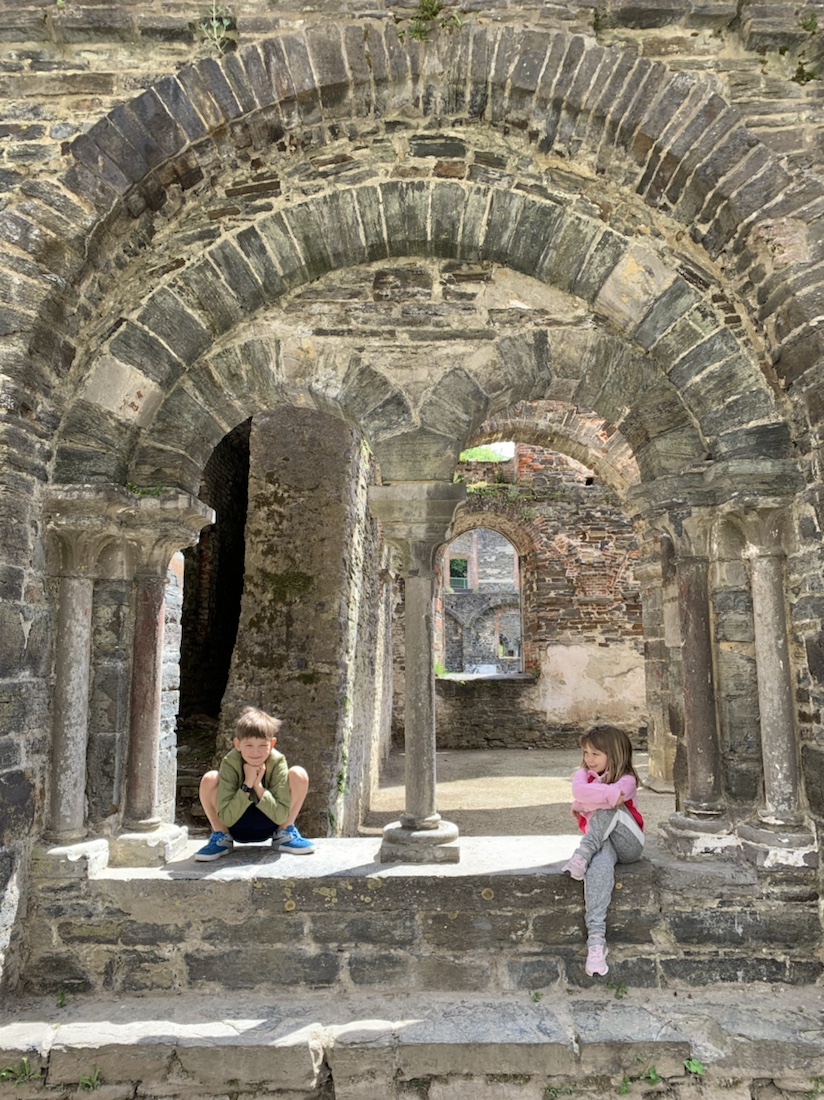
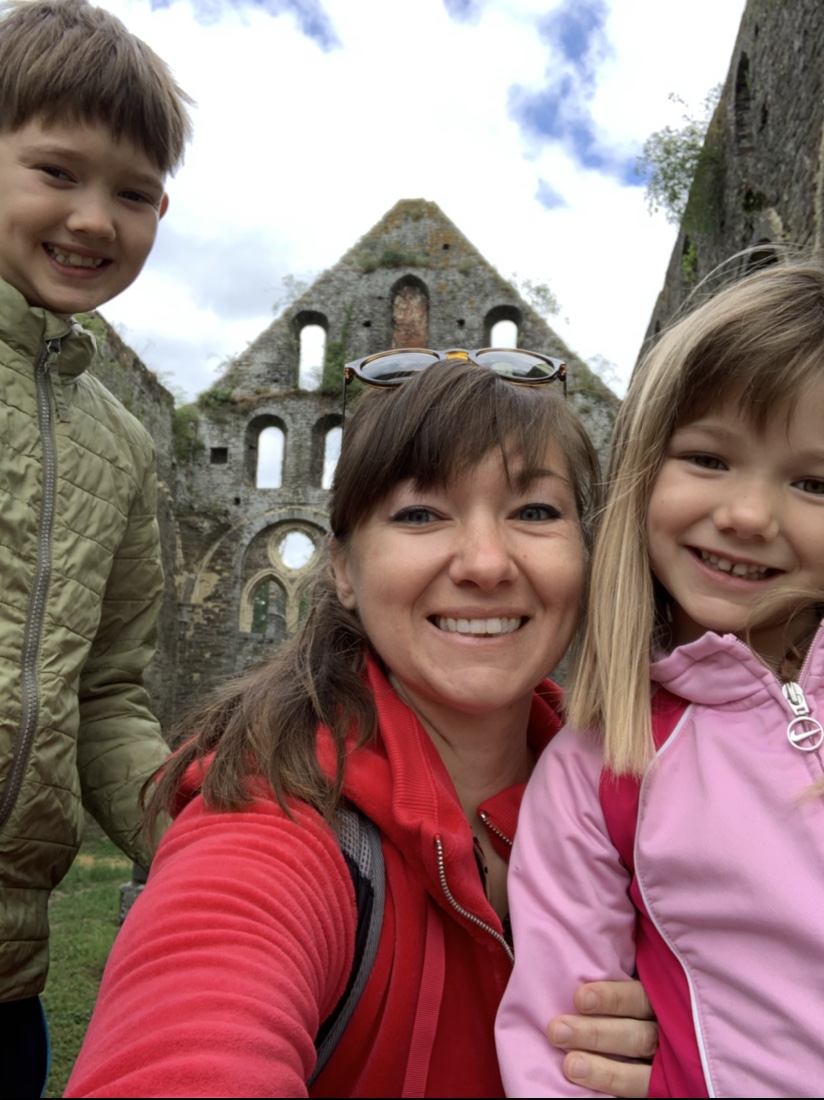
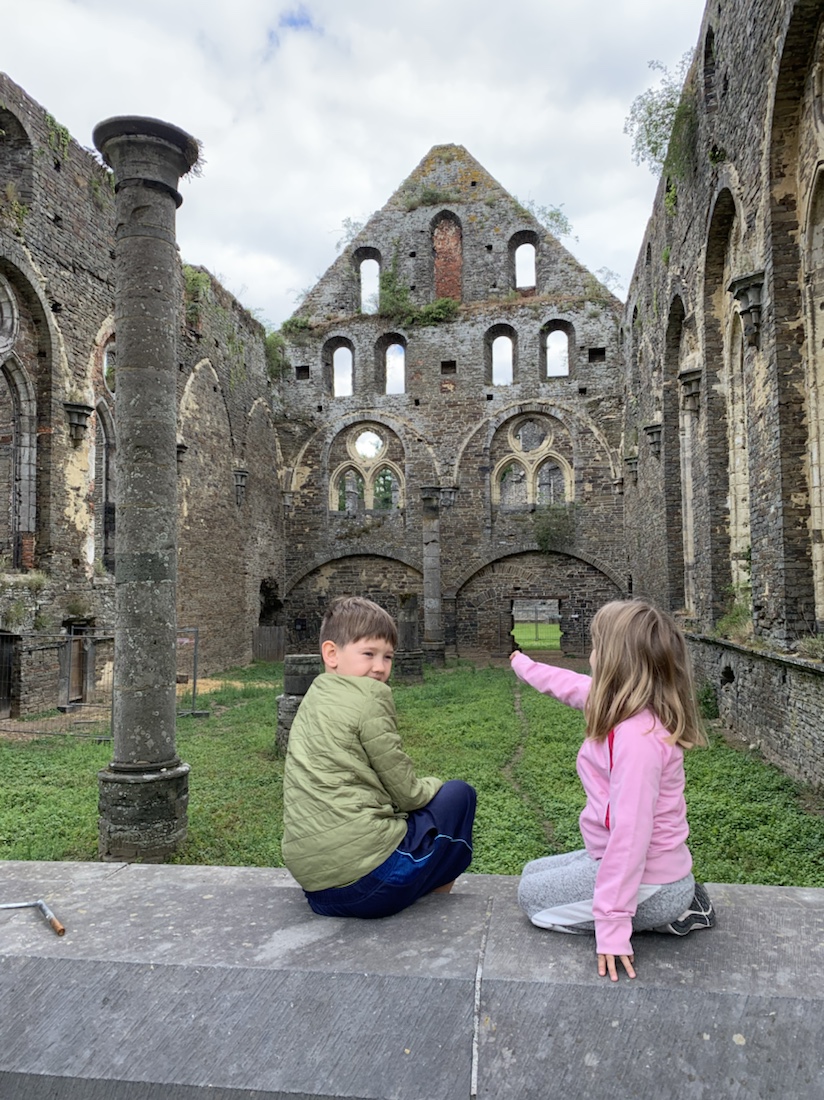
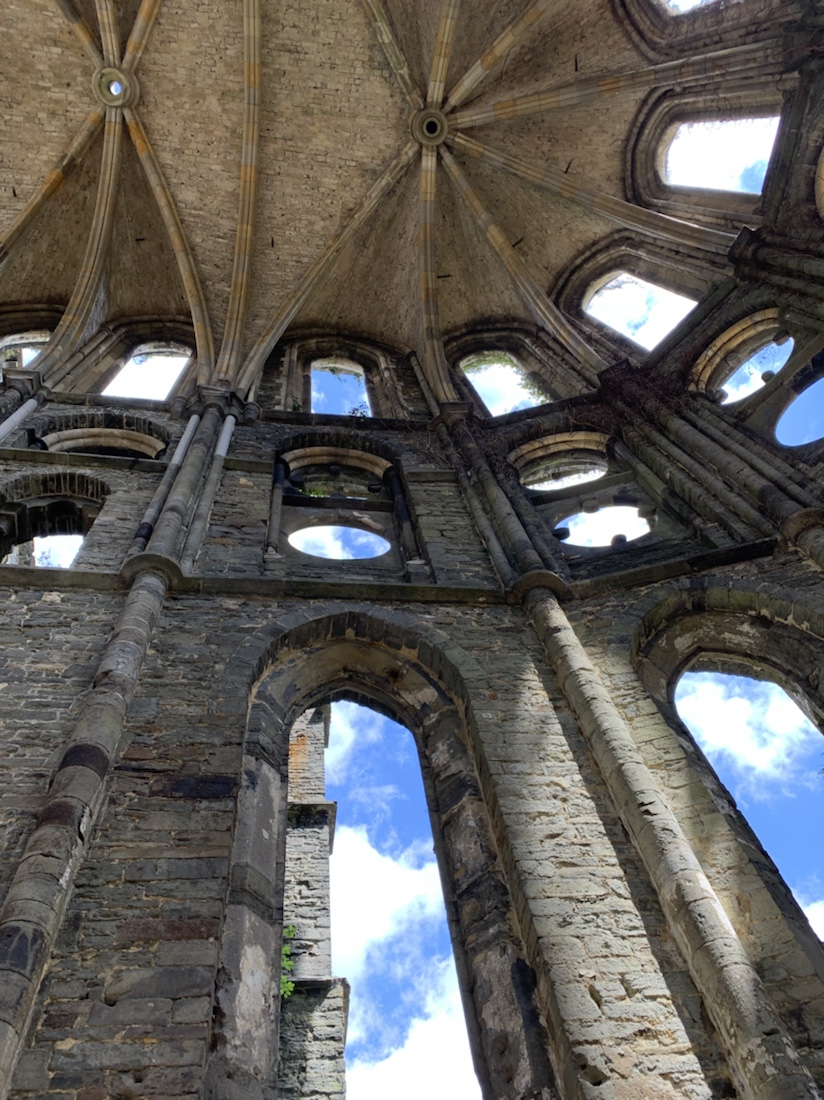
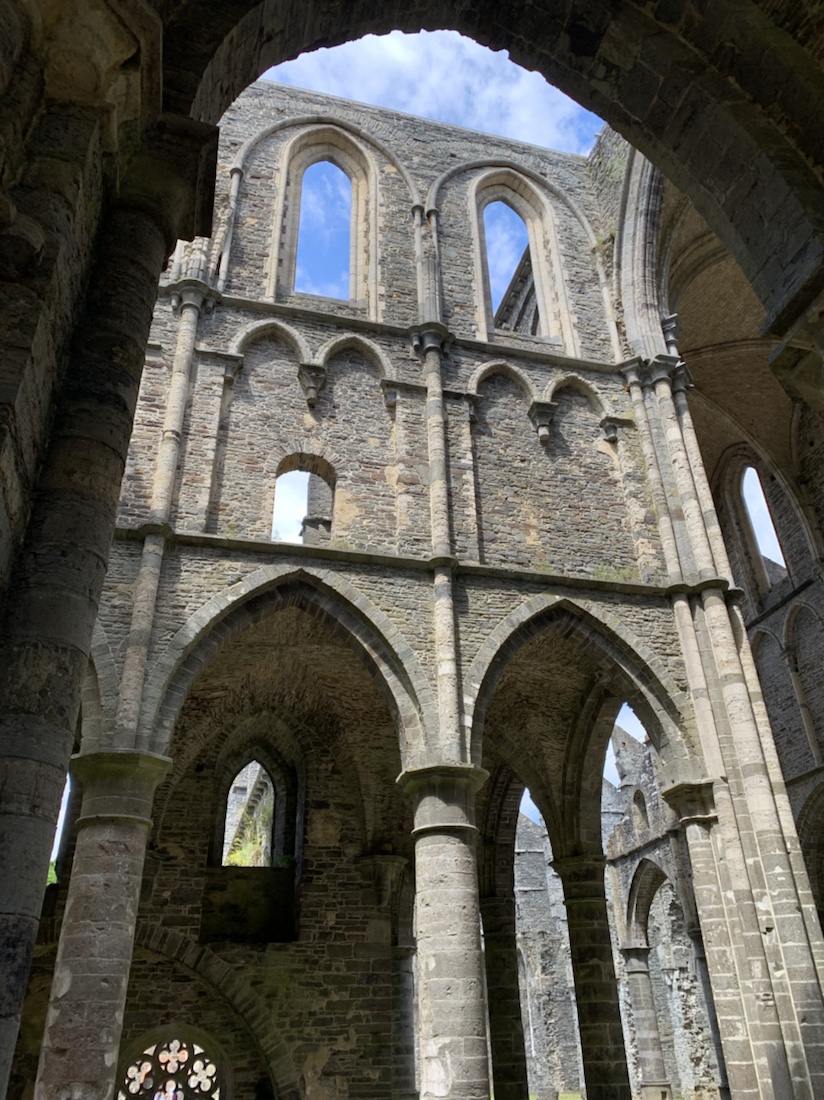
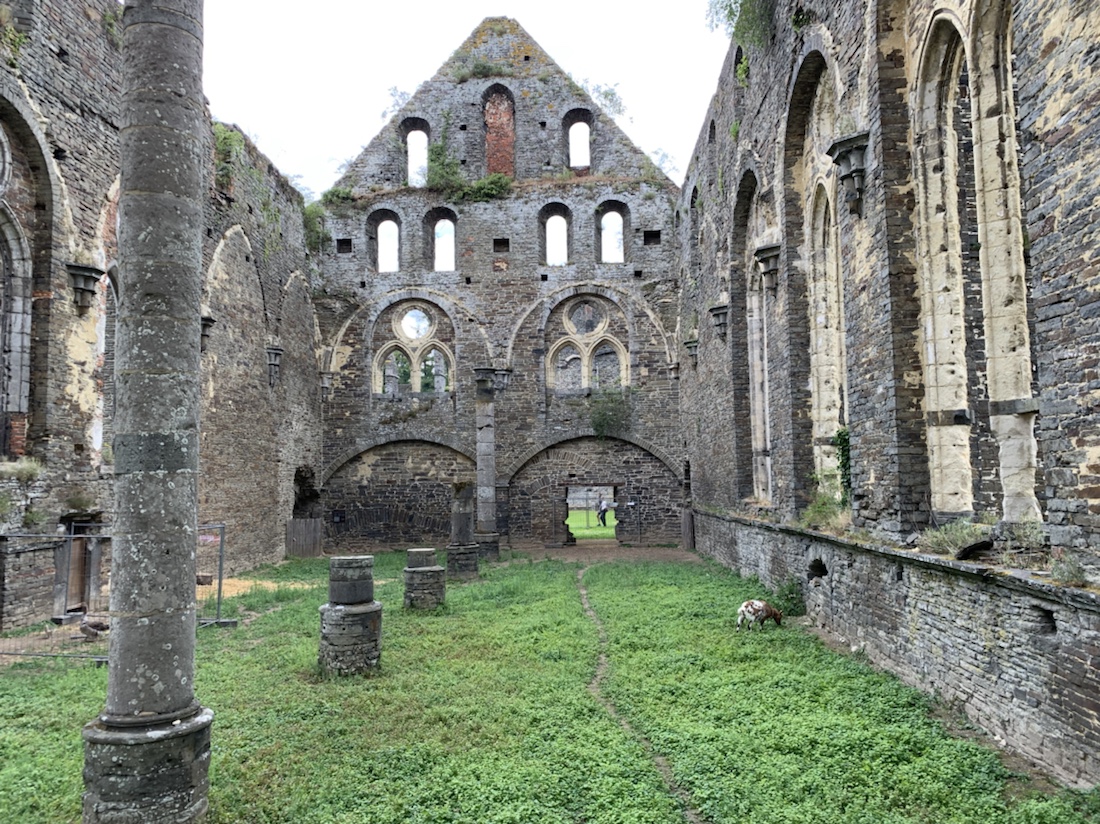
Goats and geese now take their meals in the refectory where monks once dined
The kids followed a scavenger hunt all over the grounds to solve the mystery and help free a ghost. It was a very interesting way to discover different aspects of the abbey grounds—-a river flowing underneath the compound! Eating halls and massive kitchens and guest houses and sleeping rooms and libraries and cellars and tunnels and dungeons! It is both well-maintained and charmingly falling to pieces, and you can clamber around, under and over all kinds of sagging, spooky pitch-black underground areas and high potential death traps.
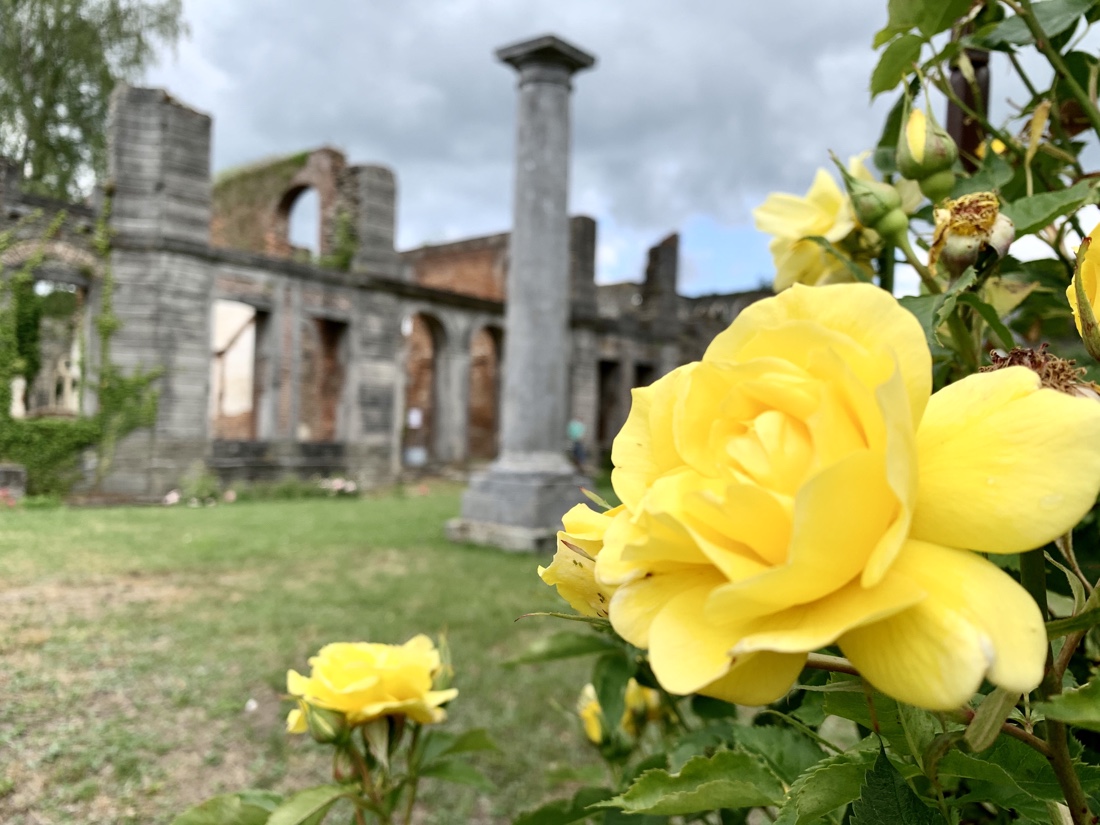
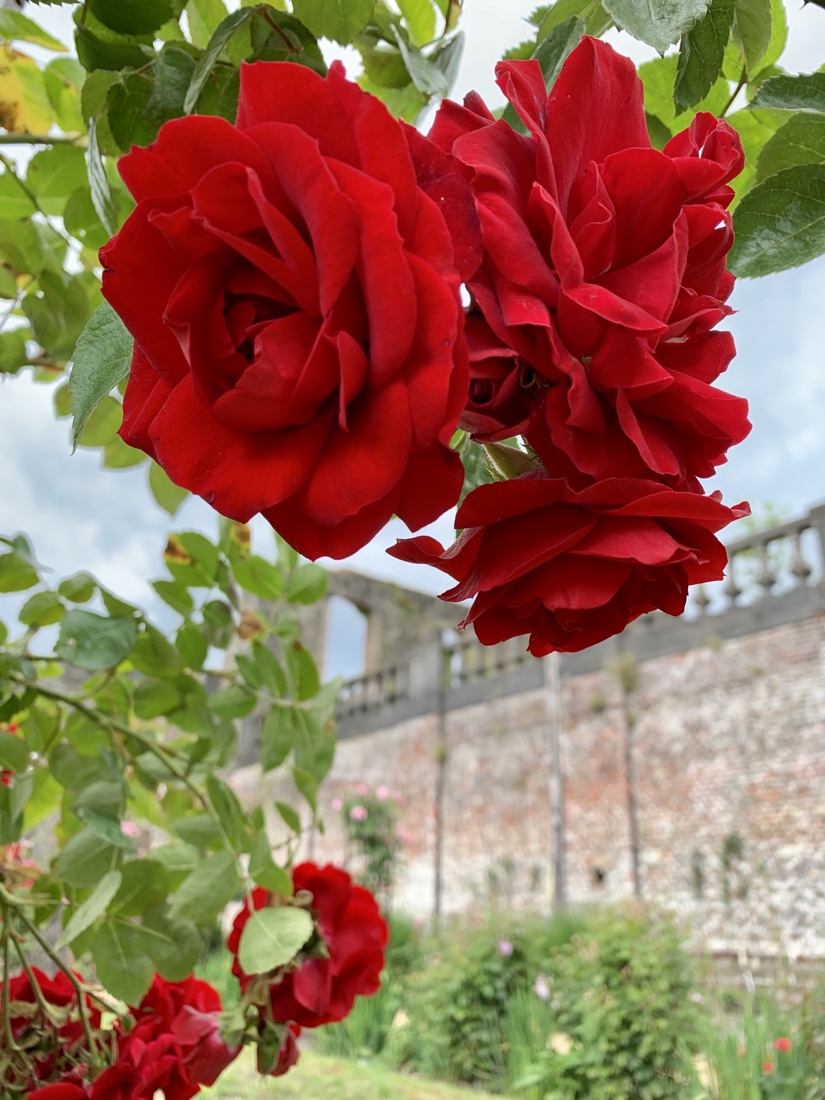
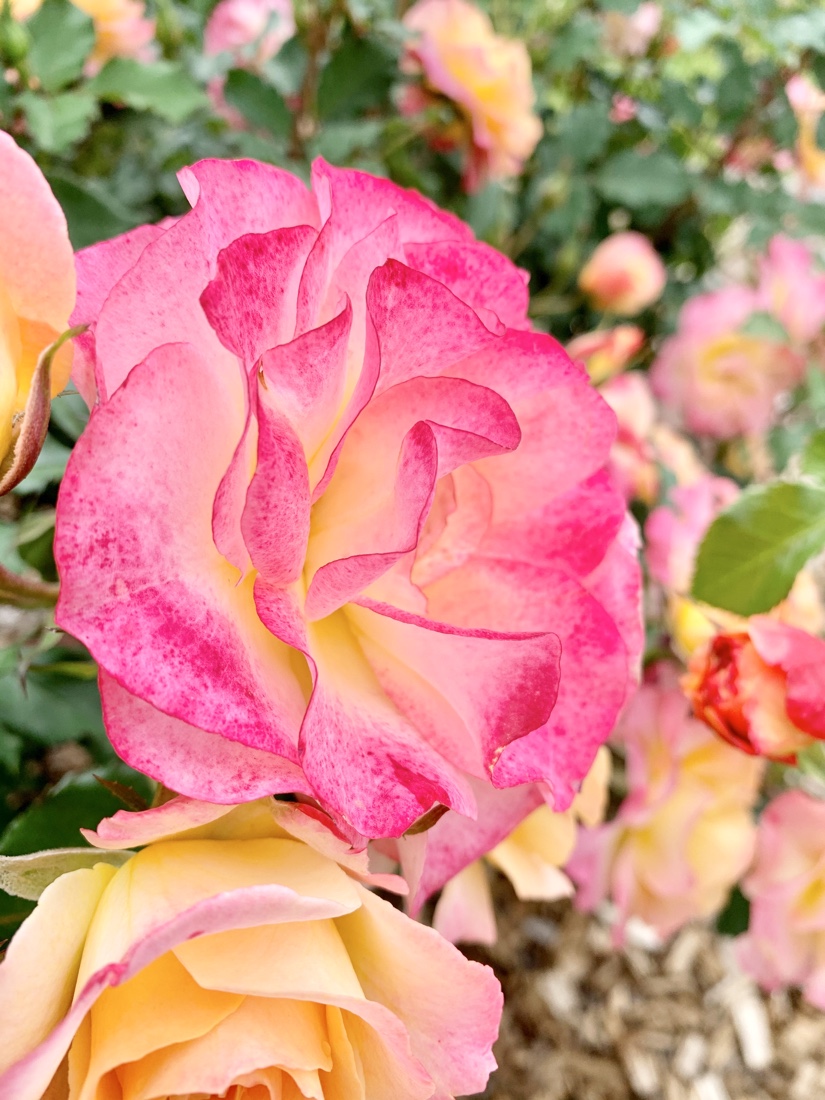

There’s been a vineyard here since the 1300s 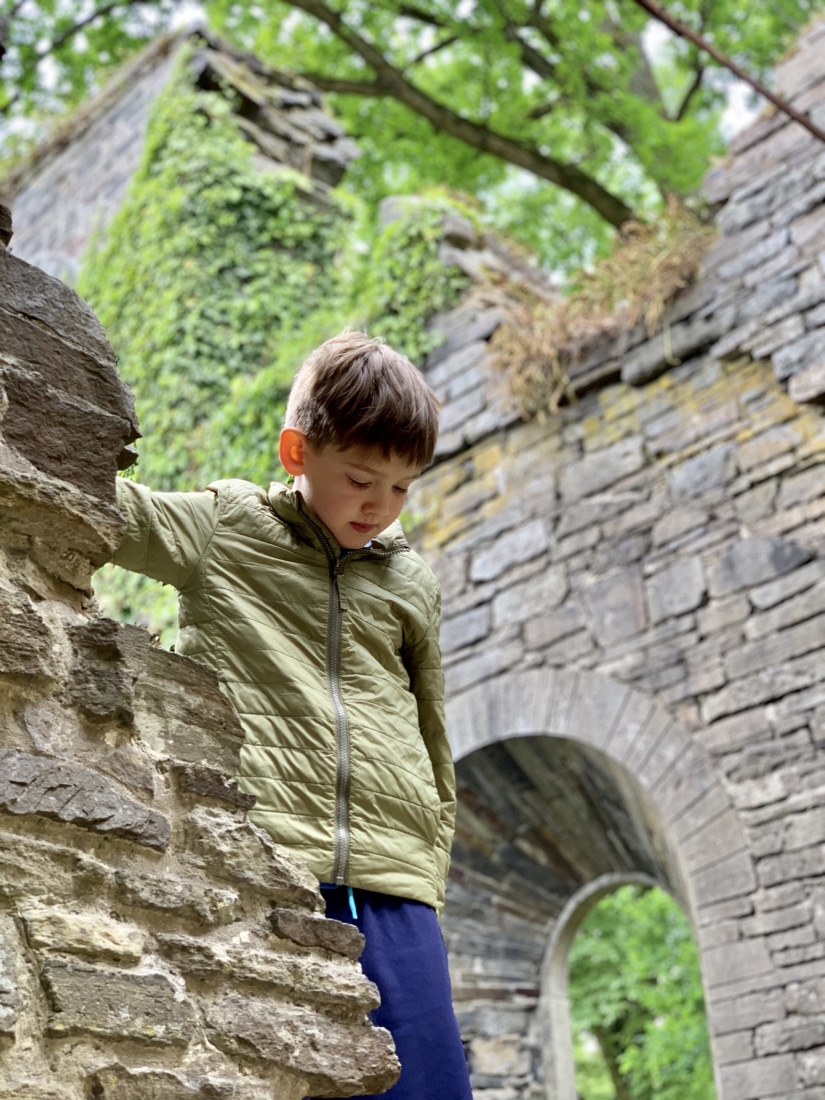
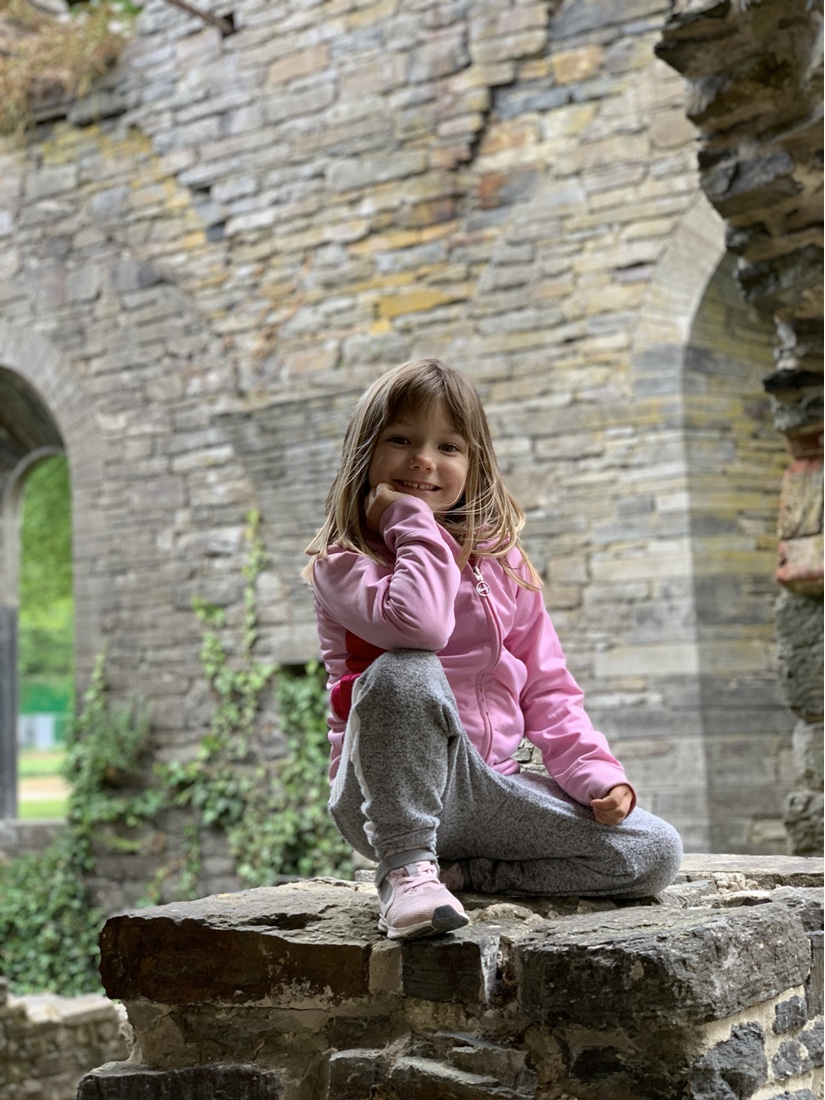
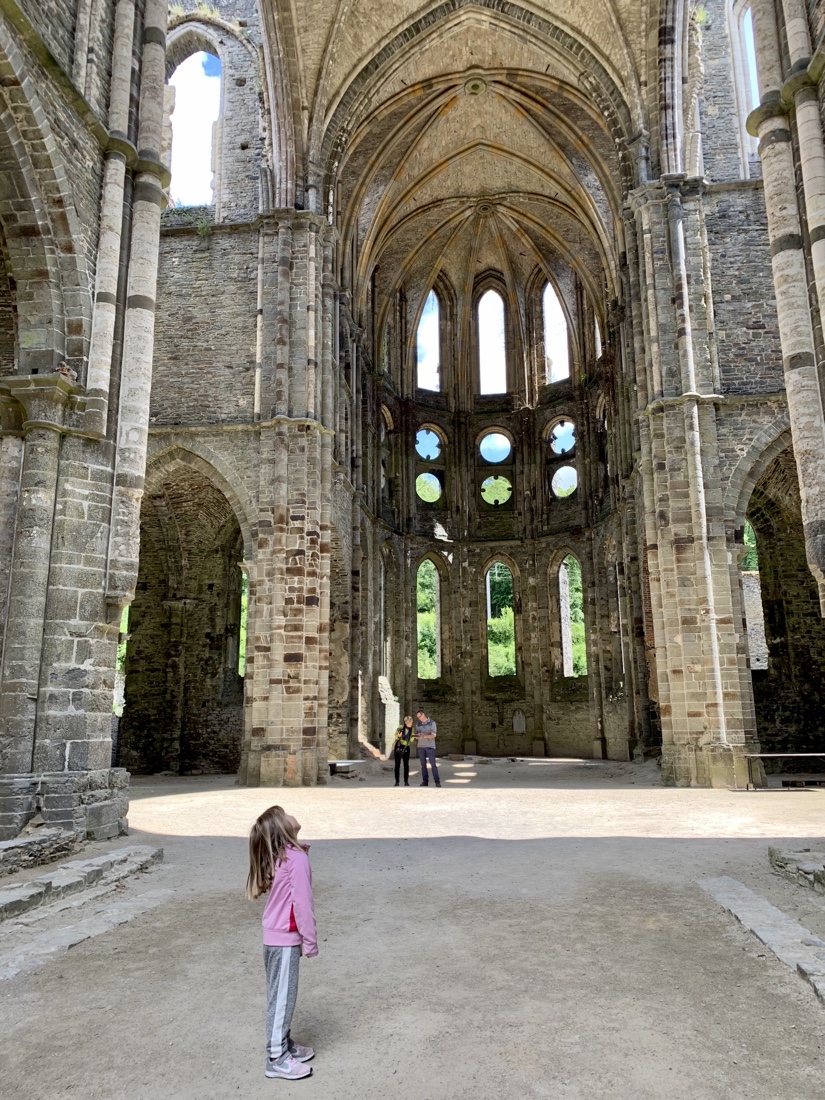
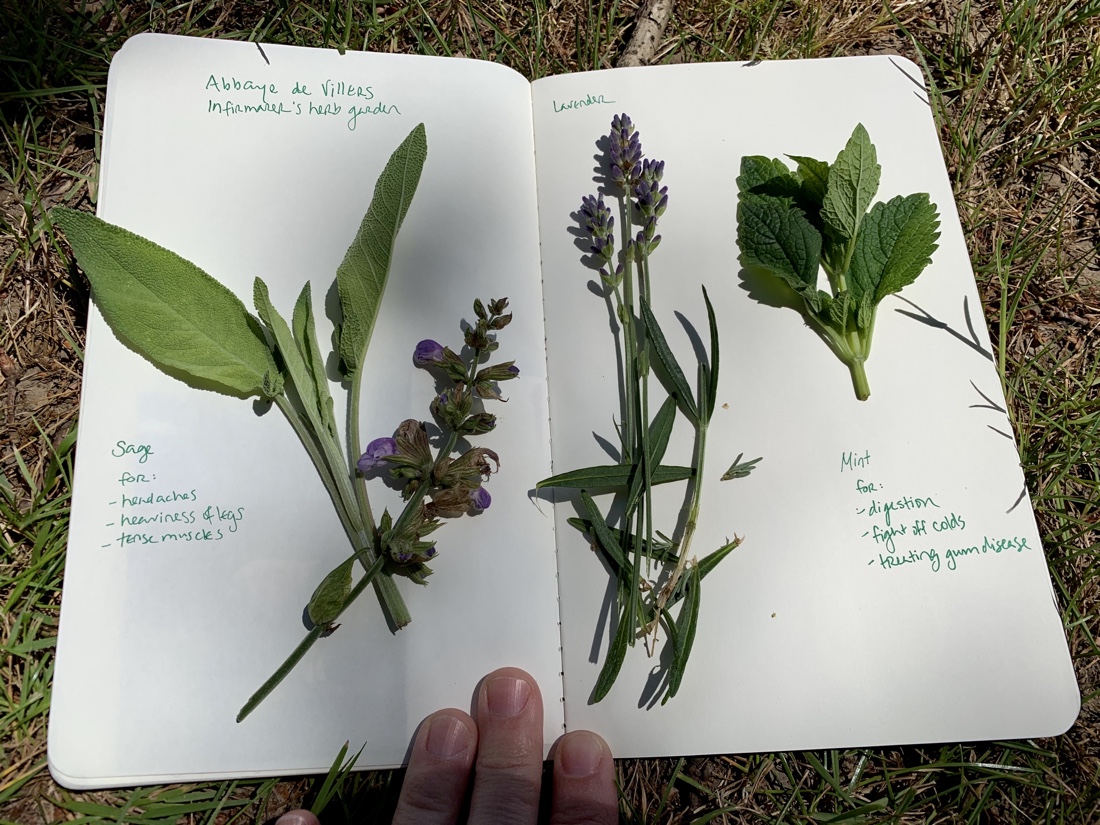
Learning about herbs
A small herb garden near the old infirmary still grows sage (for headaches), mint (for digestion and colds) and comfrey (to treat scars, possibly sustained while falling off stone ruins). Another larger and more formal garden has roses in all smells and colors growing around splashing fountains. Medieval gardens were full of symbolism—fountains to remind monks of Christ—the water of life—and baptism. Symmetry highlights order, harmony, balance and simplicity.
A medicinal garden grows plants mentioned in Hildegard of Bingen’s humoral theory. This abbess (1098-1179) corresponded with several monks at Viller’s Abbey. Her theory is that man, like the earth, is comprised of four moods or elements—air, earth, water, fire. In people, these moods are warm or cool, humid or dry. These must be kept in balance with diet and herbs to avoid illness. The abbey has a brochure on the different plants that fall into each category and where they can be found in the garden. But she also had some interesting theories about curing tumors with headless fly bodies and slug slime which I will not be trying for any reason, even if I get coronavirus.
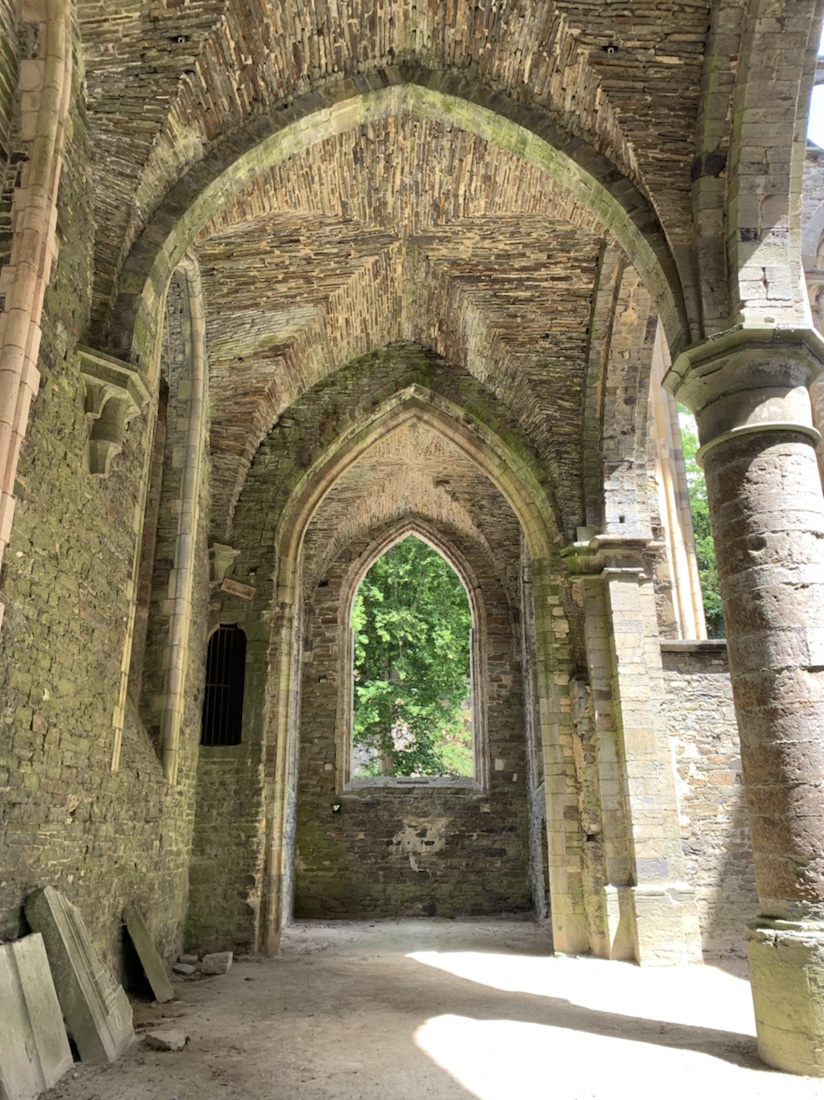
Anyway, we climbed the stone steps, passed under the train tracks, and looked out over the vineyards that were written about on this hillside as early as the 1300s. When they reopen vineyard tours, you can taste the wine they make here. They don’t make enough to bottle and sell, but they do make beer so I bought some for Chris, since he was working and couldn’t come to outside abbey scavenger hunt church with us this Sunday.
There’s also a water wheel, a rose garden timeline of ancient world events, a murder mystery for kids older than mine, and an exciting sense of being either an old monk, a wise gardener, or a brave explorer of ancient mysteries. It’s also cool to enter the cathedral and lift your eyes to the heavens and see the sky brighter than any painting. I love cathedrals, and this one especially.
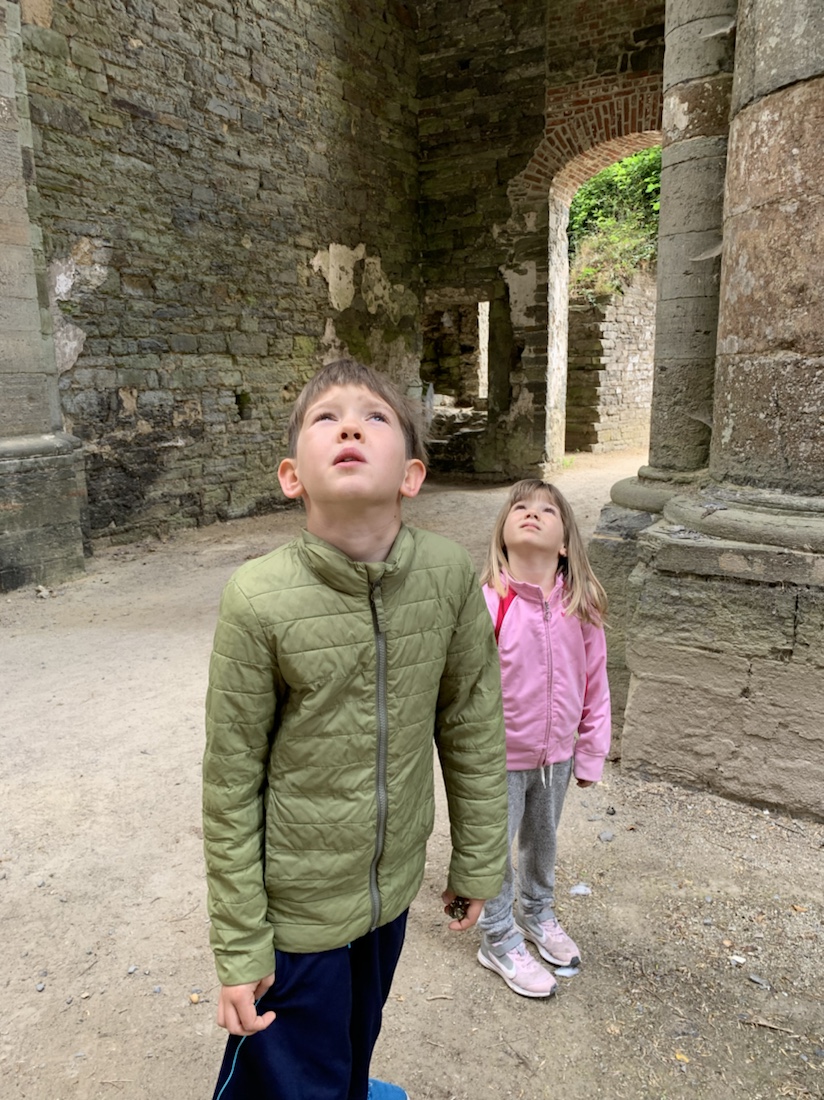
Isaac says, “watch out for bird poop.” 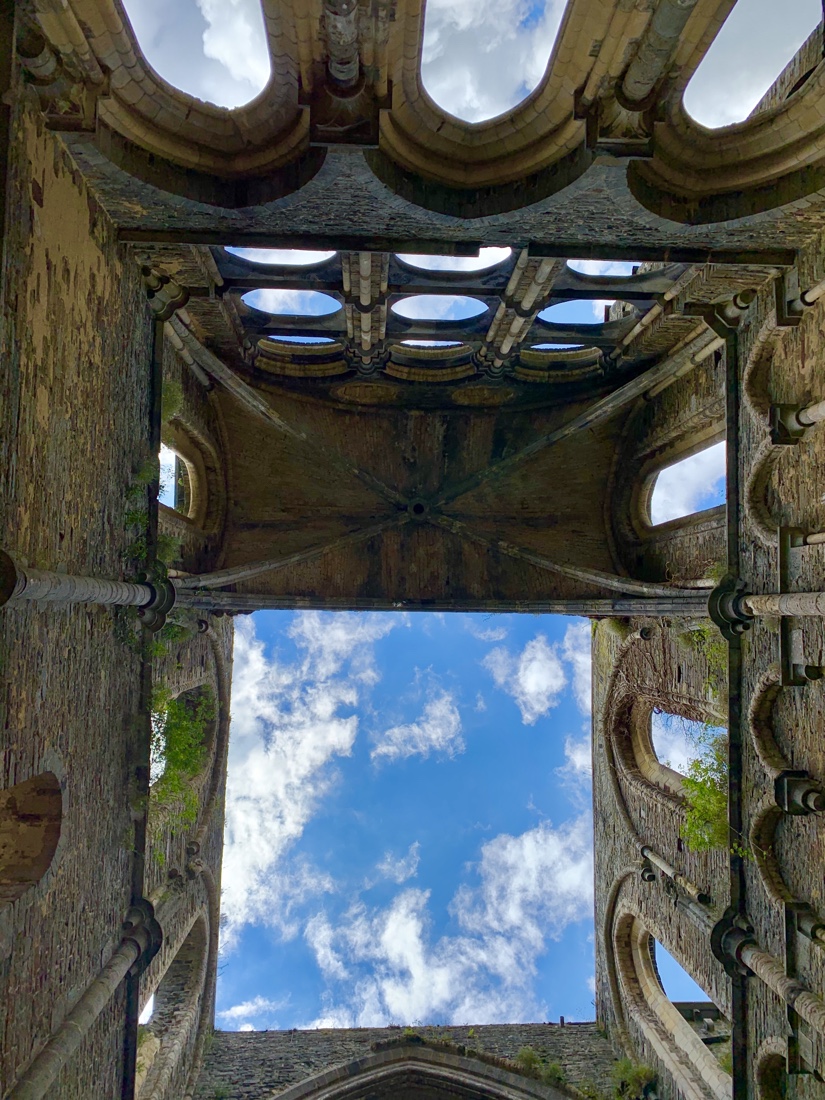
The sky is the limit! 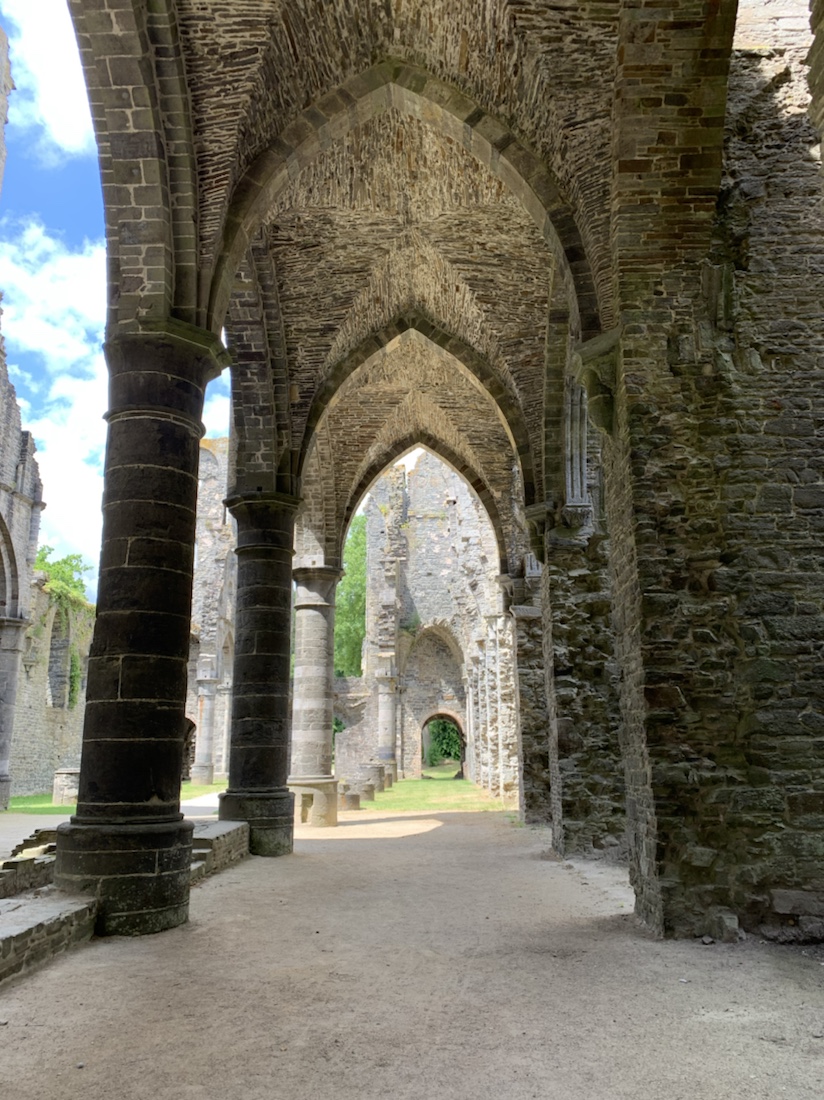

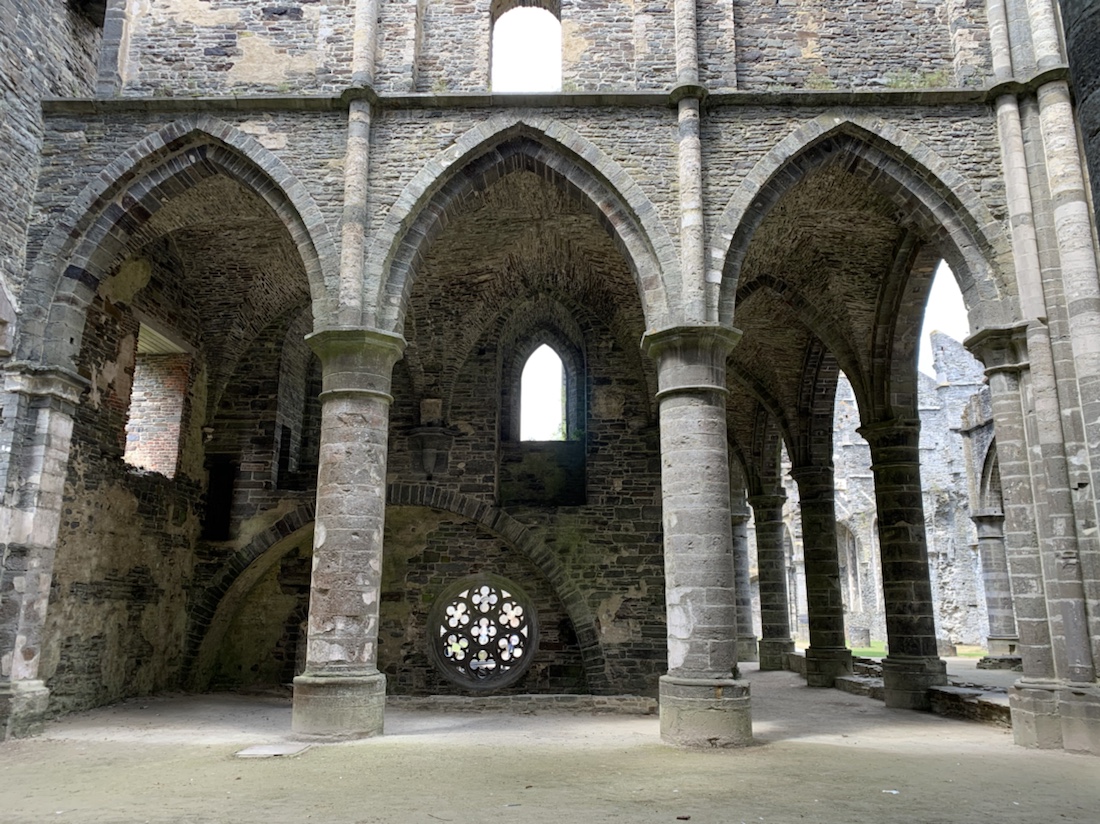
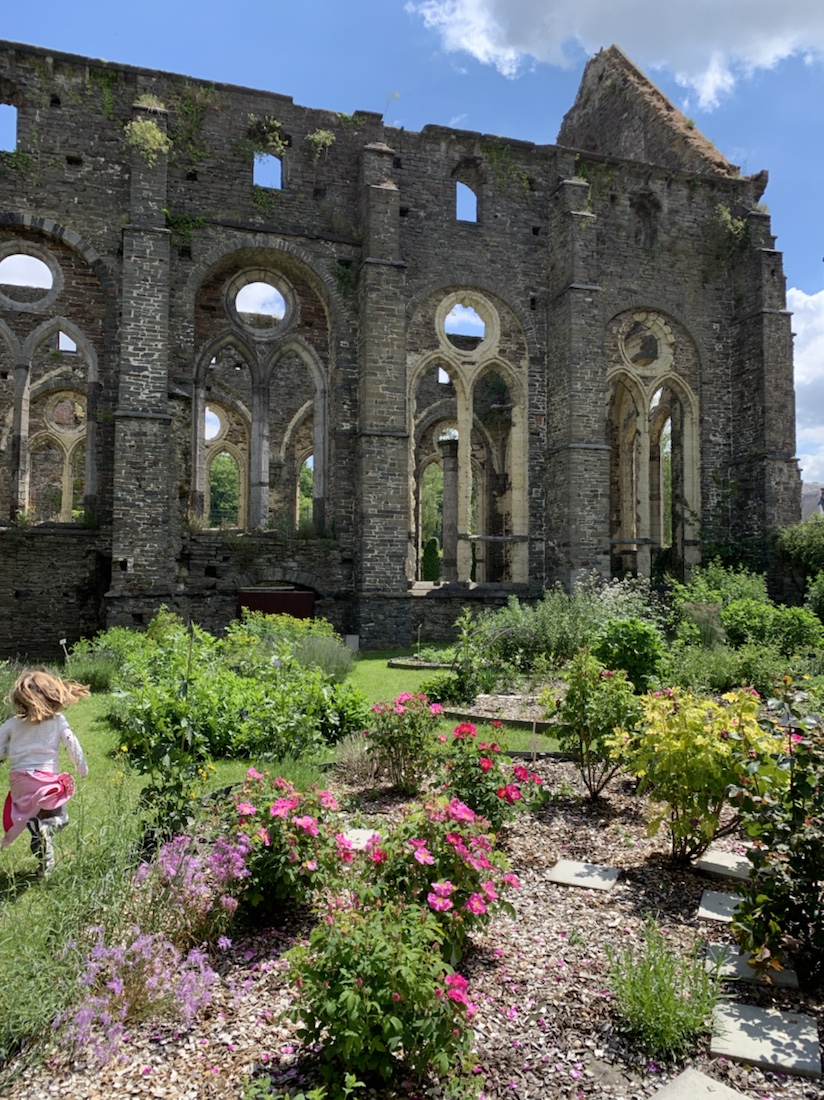
Eloise in the kitchen garden 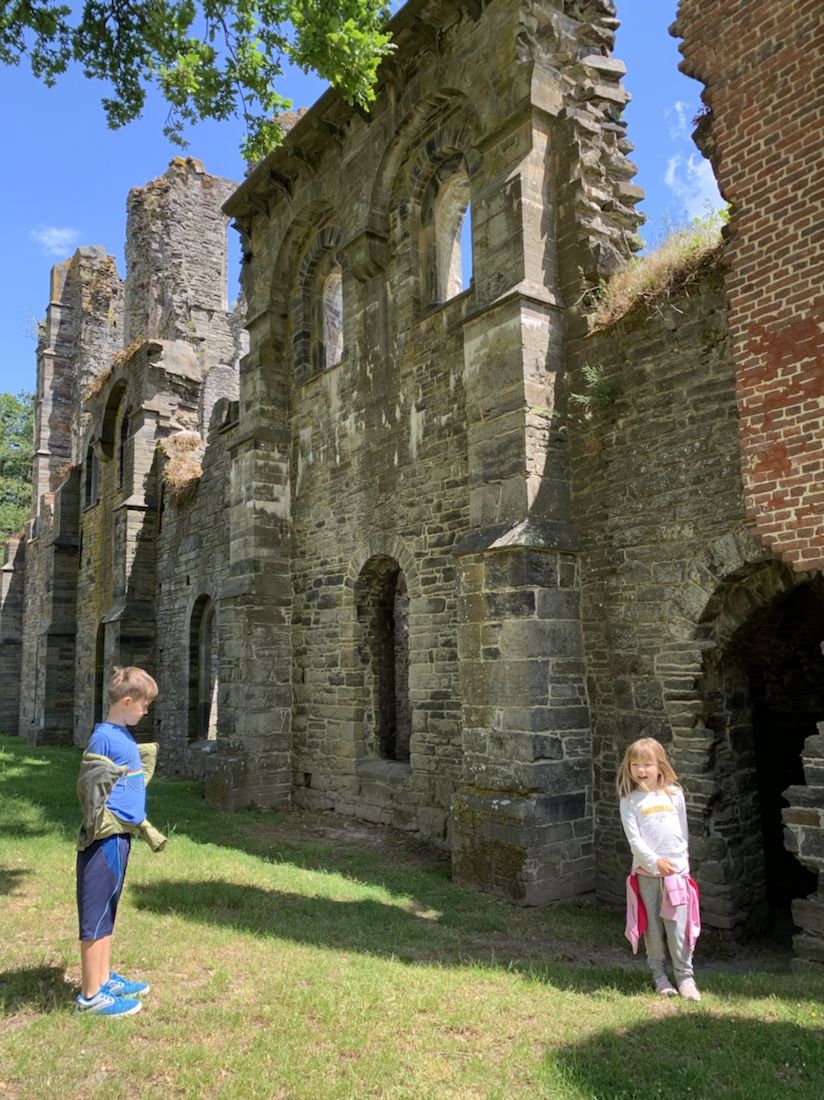
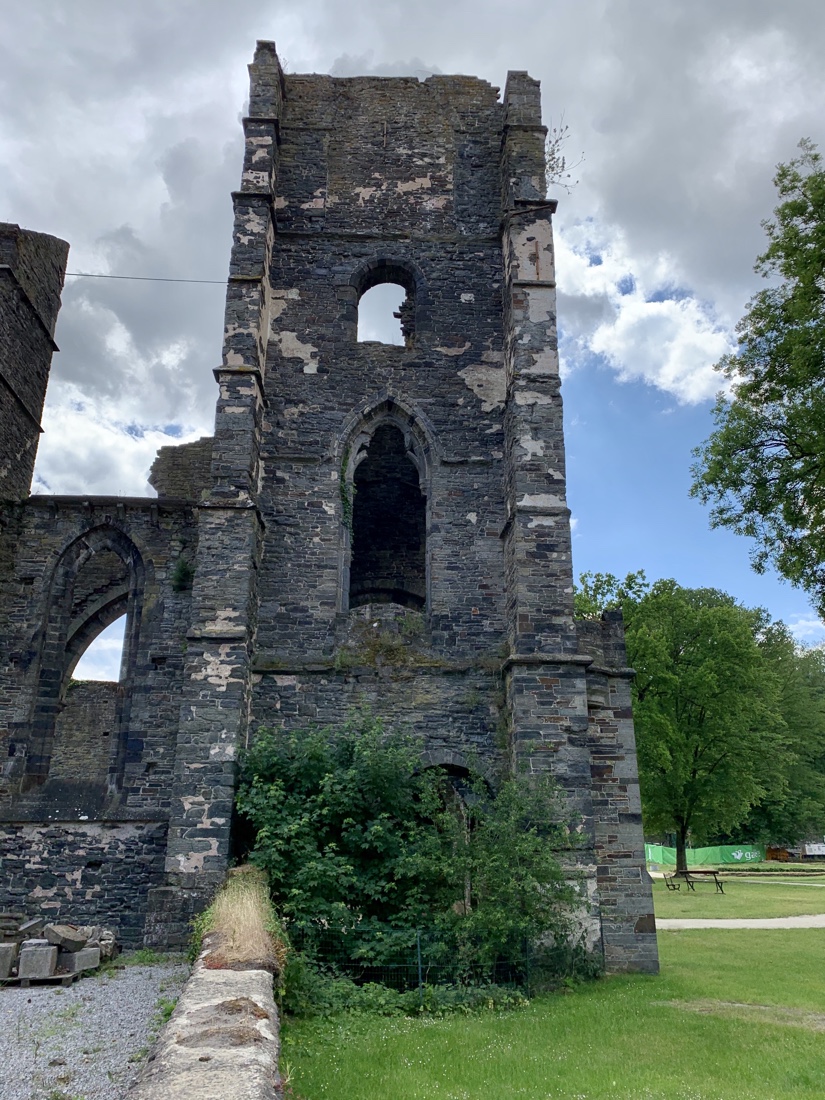
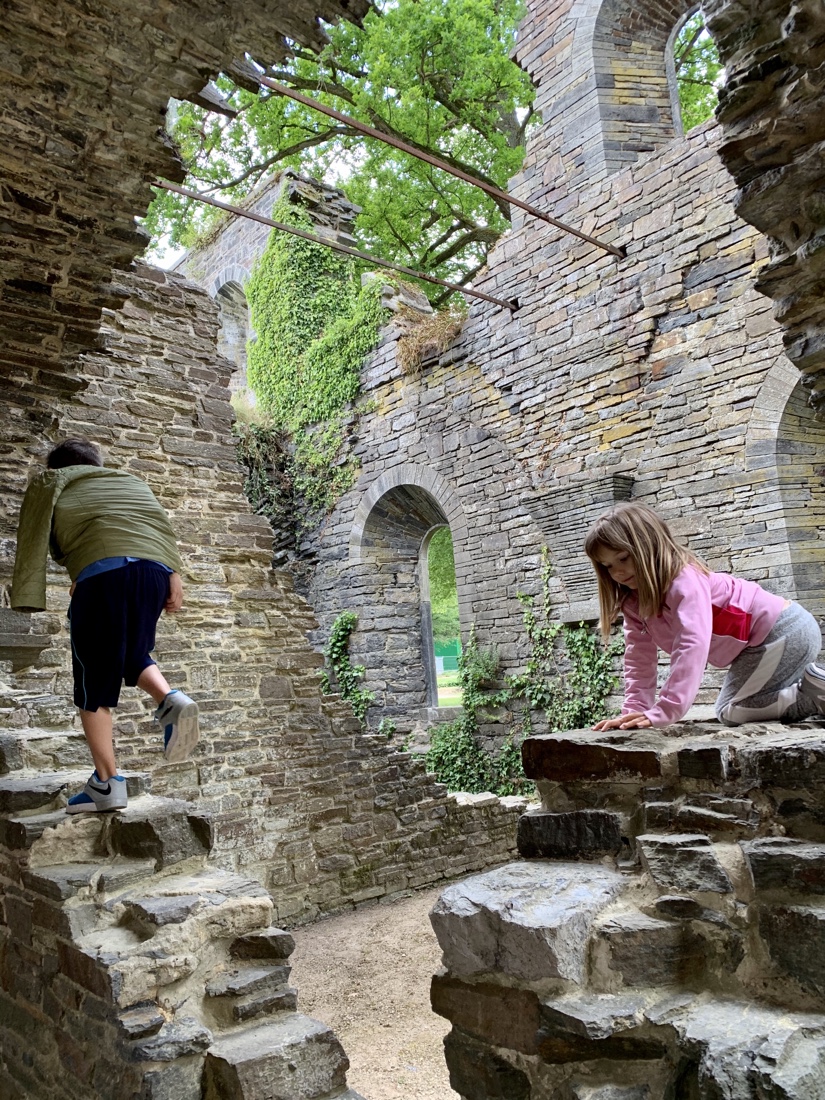
Tiny explorers
I read the book “Pillars of the Earth,” recently, which I can’t really recommend, because the bad guys are so awfully evil the entire time and then boom, everything sort of gets glossed over at the end for a happy ending after like a million pages of anguish and injustice. I’m mentioning it here because it’s about building a cathedral like this during the time this one was being built, by monks of the Benedictine Order, which these were.
On our way out we walked by the exterior windows to the tunnels that freaked the kids out at the beginning. “Wooooooo!” they made spooky sounds at the people inside, who “woooooo!”ed back at them and laughed. A most charming and pleasant day.
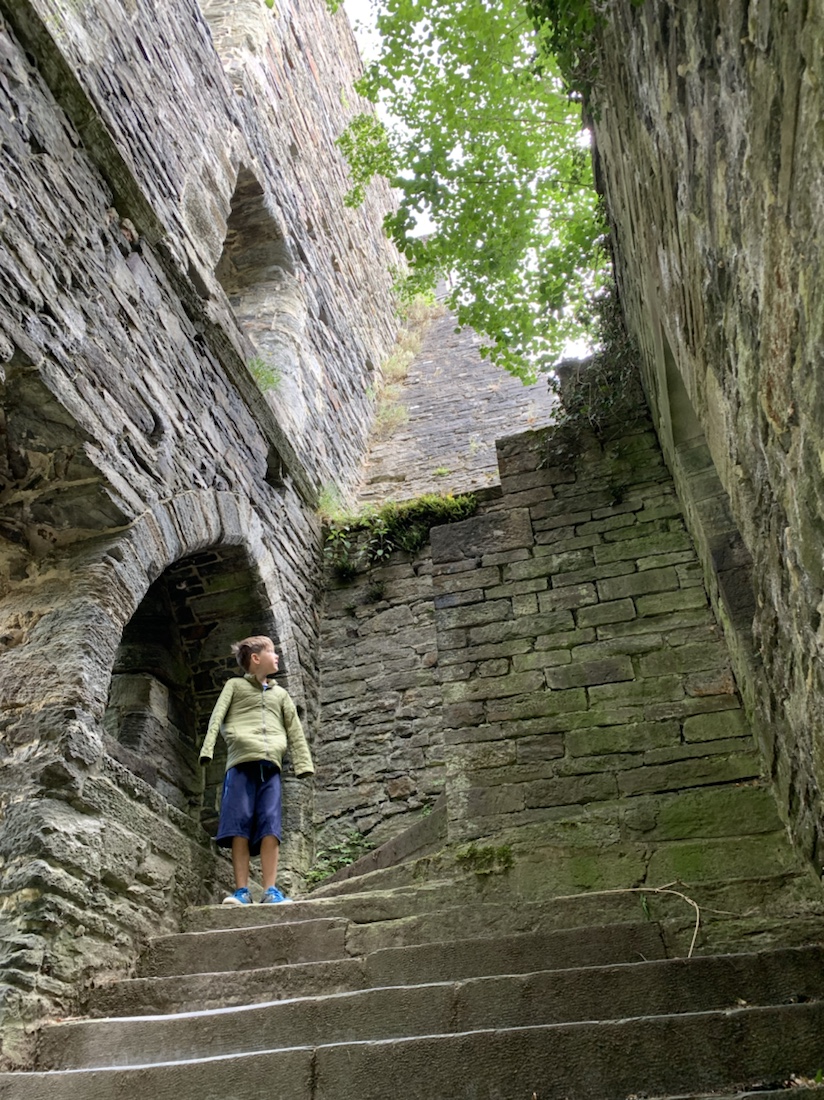

 The Last Post About Skiing
The Last Post About Skiing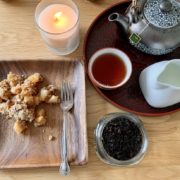 Late Summer, Early Fall
Late Summer, Early Fall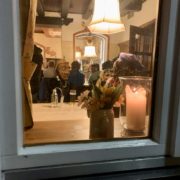 Bavarian Customs
Bavarian Customs